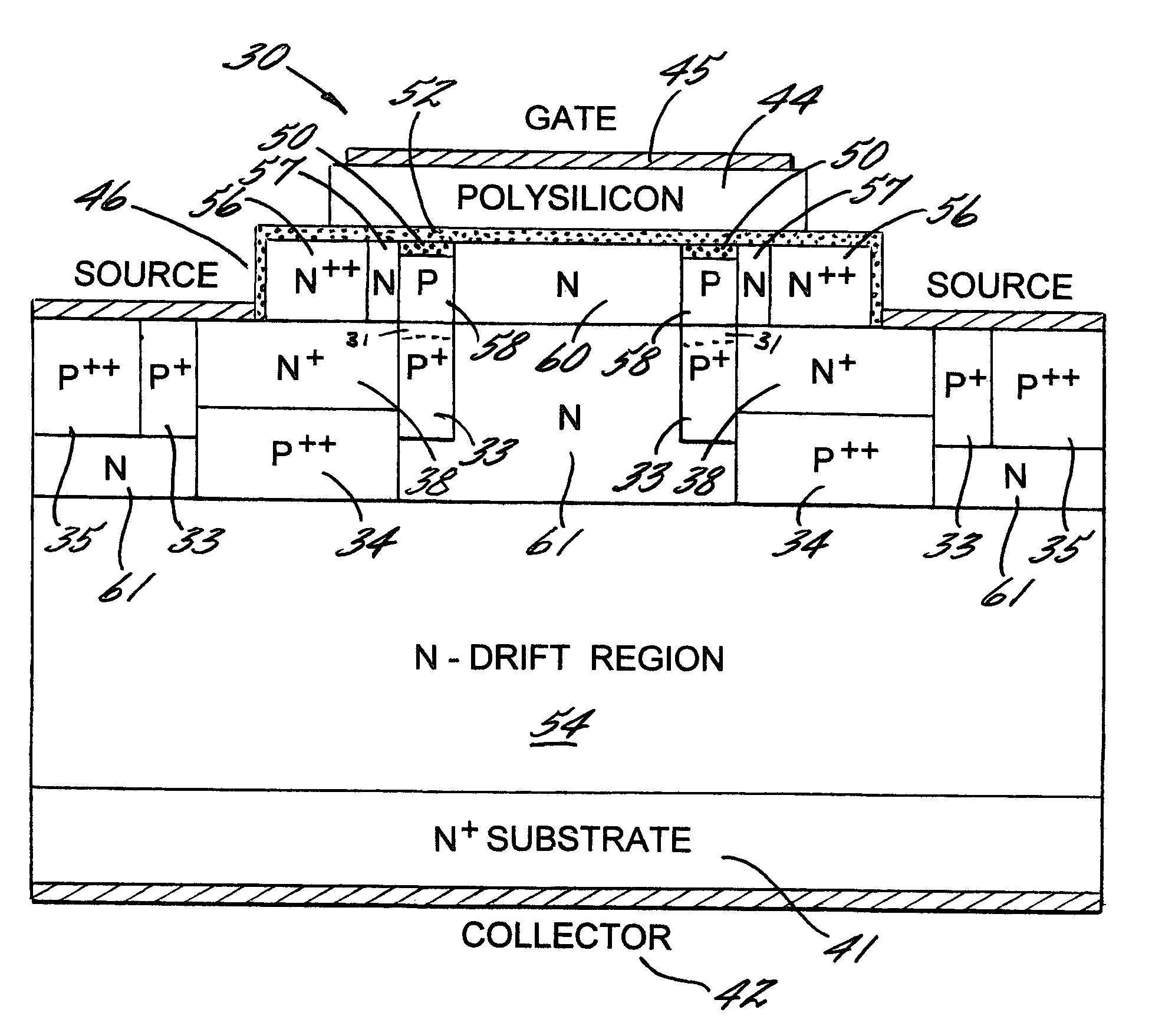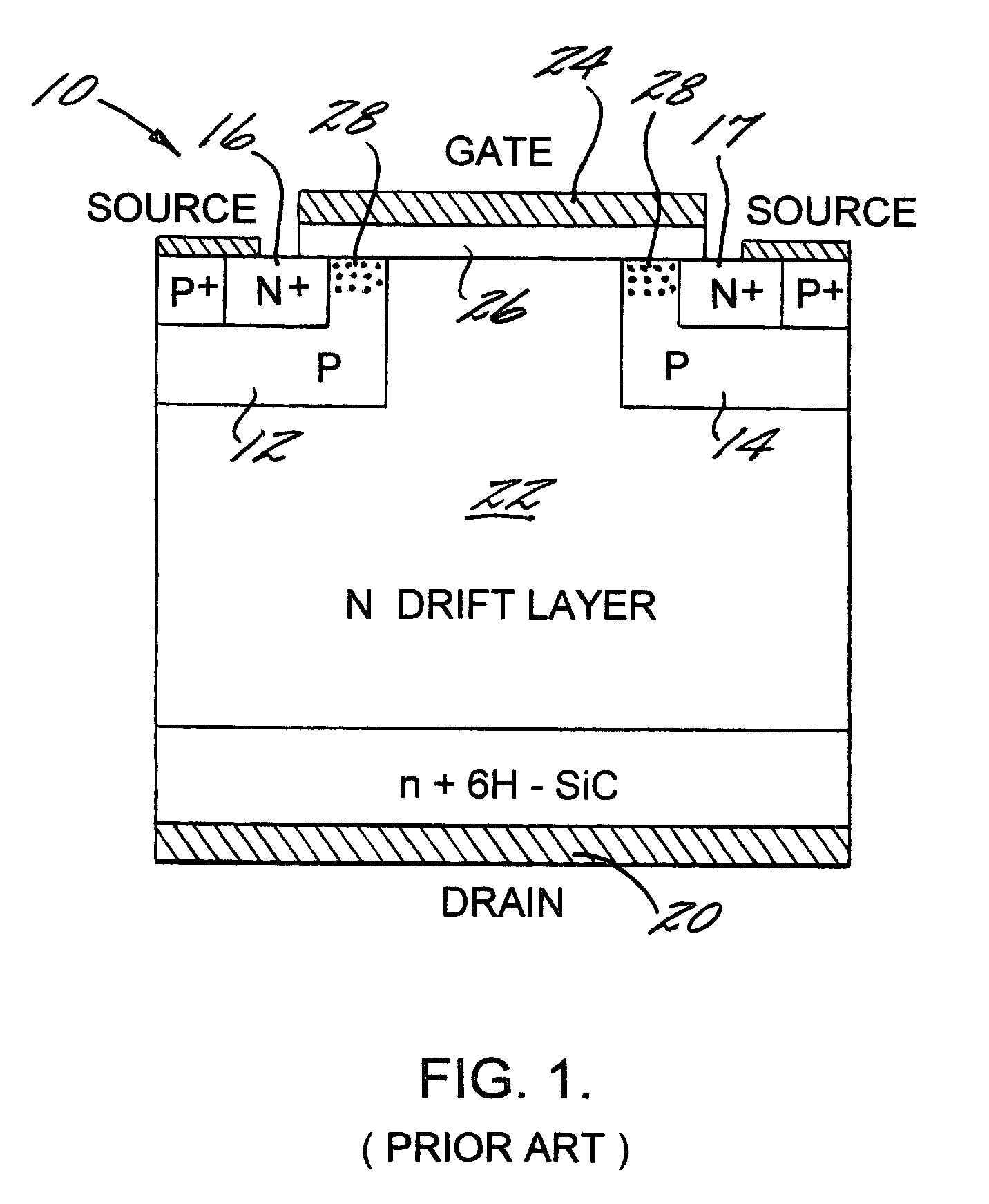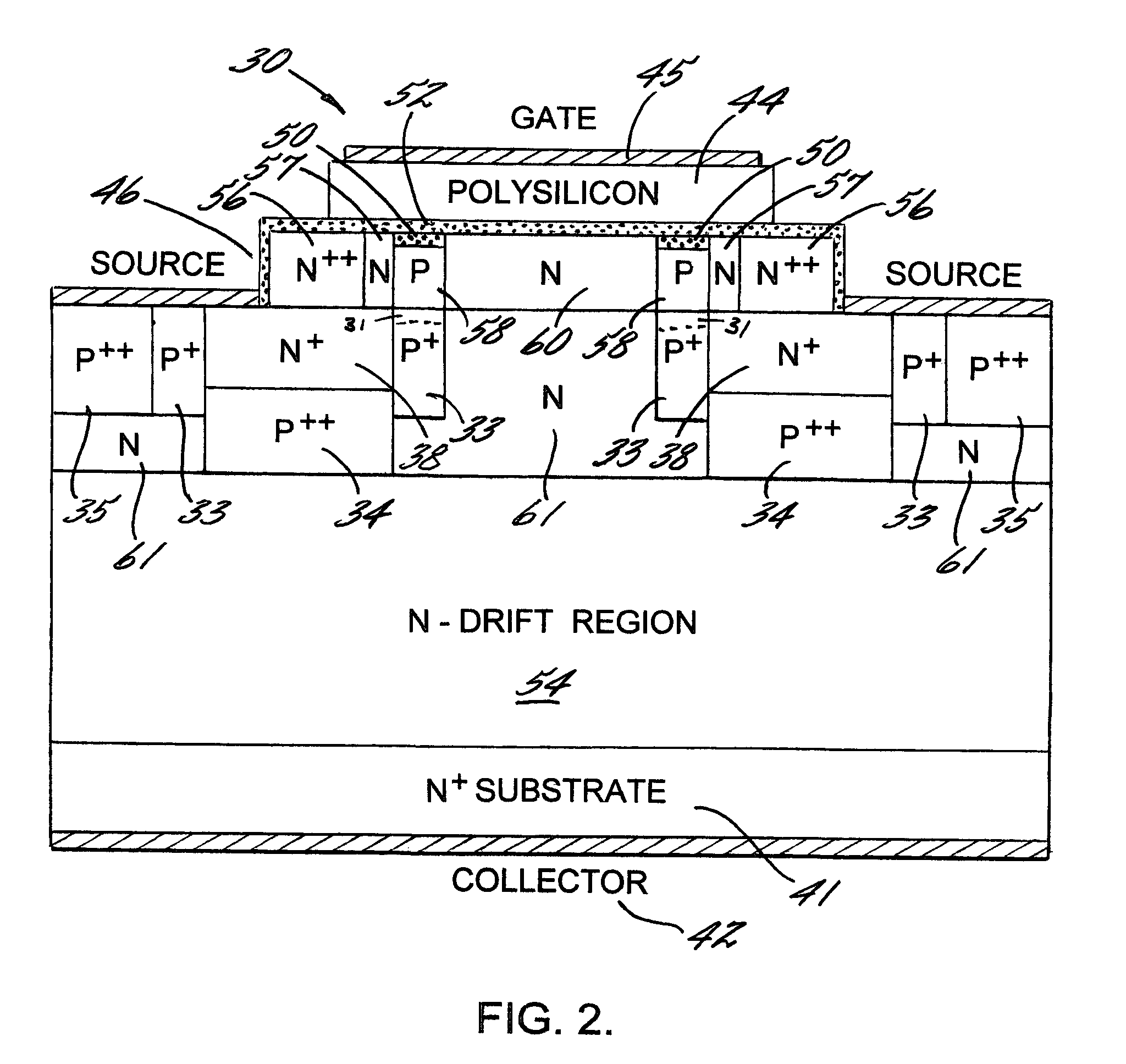Semiconductor transistor with P type re-grown channel layer
a technology of regrown channel layer and semiconductor transistor, which is applied in the direction of transistors, semiconductor devices, electrical equipment, etc., can solve the problems of high on-resistance, poor mobility, fluctuation of the threshold voltage that turns on the device, etc., and achieves better control
- Summary
- Abstract
- Description
- Claims
- Application Information
AI Technical Summary
Benefits of technology
Problems solved by technology
Method used
Image
Examples
Embodiment Construction
[0024]The invention is a device for controlling electrical conduction across a semiconductor body, particularly useful for metal-oxide-semiconductor field effect transistors (MOSFETs) (30), insulated gate bipolar transistors (IGBTs) (65), and other semiconductor devices used in power applications across a wide range of temperatures. The transistors disclosed herein incorporate a new P type regrown channel layer (46, 66) over the P type well (33, 83) that surrounds the transistor source region (38, 78).
[0025]This detailed description should not limit the invention to literal terms. For example, terms describing relative position of elements in this invention should be given their broadest meaning unless otherwise noted. For example, when a transistor element or layer is located “on” another layer, “beside” another element, or “adjacent” or “proximate” a certain part of the device at hand, that terminology suggests that intervening parts of the device may be present between the recite...
PUM
 Login to View More
Login to View More Abstract
Description
Claims
Application Information
 Login to View More
Login to View More - R&D
- Intellectual Property
- Life Sciences
- Materials
- Tech Scout
- Unparalleled Data Quality
- Higher Quality Content
- 60% Fewer Hallucinations
Browse by: Latest US Patents, China's latest patents, Technical Efficacy Thesaurus, Application Domain, Technology Topic, Popular Technical Reports.
© 2025 PatSnap. All rights reserved.Legal|Privacy policy|Modern Slavery Act Transparency Statement|Sitemap|About US| Contact US: help@patsnap.com



